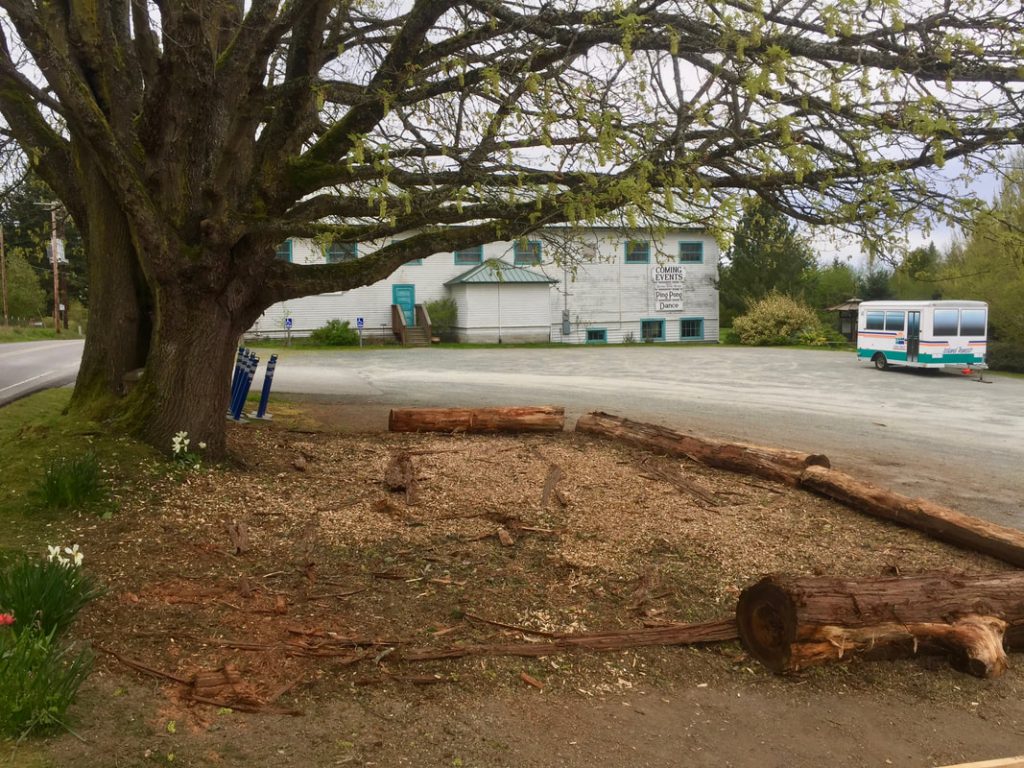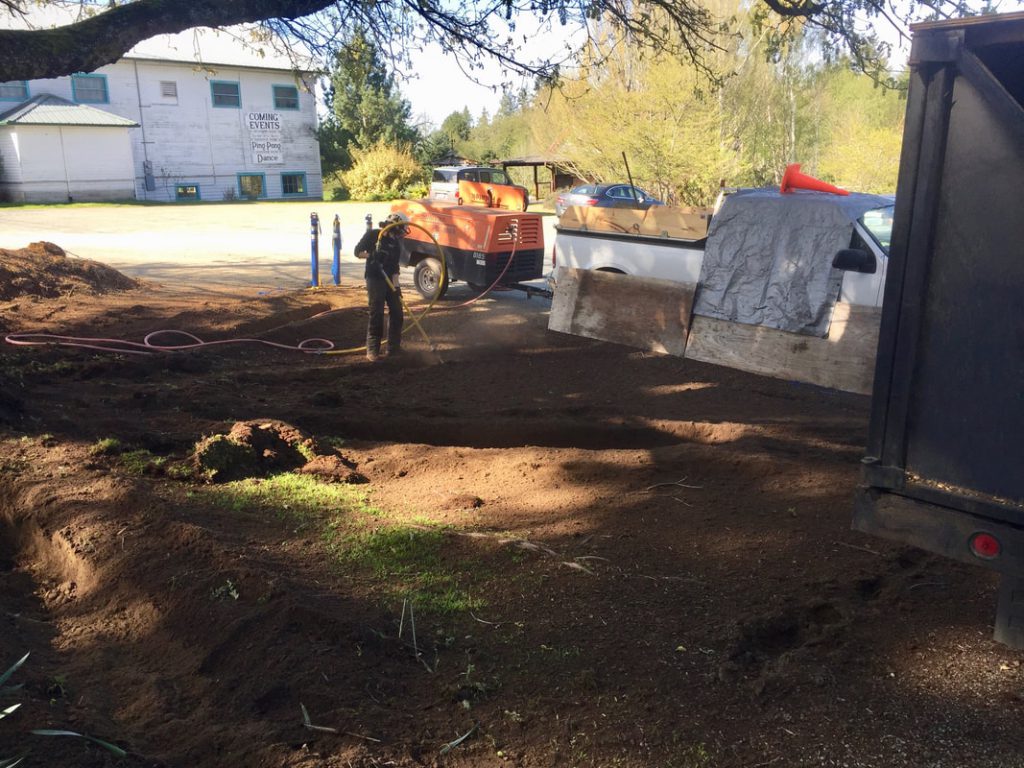History is important when assessing a trees condition or health. Approximately 4 years ago this tree lost a large leader, damaging other portions of the crown. Damaged portions of the tree were pruned back to nodes to promote sprout growth in order to allow the tree regenerate lost crown mass. Unfortunately the tree did not respond as hoped, indicating a loss of vigor.
Another party contacted Goosefoot expressing concern of additional limb failure impacting life and property within the parking lot. With further assessment of the Big Leaf Maple (Acer macrophyllum) we determined that the tree had limited rooting space. With a busy parking lot covering half of the trees root system, and a road on the other half the tree did not have many options for positive rooting space. Additionally the crown of the tree is restricted due to the high voltage power lines across the street.
Late this winter we began the conversation of the best approach to mitigate risk, benefit the maple, as well as the Bayview community. The balancing act of infrastructure and large tree management always needs to come with compromise. In order to allow the tree to thrive we removed access to 4-5 parking spaces, by placing organic barriers. The choice of using logs has much to do with recreating a sliver of a natural ecosystem.
Additionally we used advanced techniques to alleviate the compaction issue for the tree. Most of the trees fine absorbing roots are in the upper foot of soil where oxygen, water, and nutrients from decaying organic matter is the most plentiful. Soil compaction limits the availability of these resources, coupled with 5 inches of compacted crushed gravel limited this trees ability to respond to damage within the crown. Simply by applying a good wood chip mulch helps tremendously to alleviate these conditions, but it takes time which this tree did not have. This is where air excavation tools, radial trenching, and soil amendments come into play.
Of course there are many ways to decompact and add amendments to soils, but modern air excavation equipment does so with the least amount of impact and damages to the existing root system. Trenches were blown into the soil, then amended with a blend of excavated material and mushroom compost. Mushroom compost was chosen due to the high organic matter coupled with a favorable carbon to nitrogen ratio. The last touch was to break up the gravel layer and add 4-5″ of ‘Arborist mulch.’
It was alarming how compacted the soil was underneath the gravel. Another significant observation was how dry the soils were. This April has had a significant amount of rainfall, with saturated soil throughout the Puget Sound region. This was not the case for our poor maple tree!
The next step was to work the crown of the tree, to help stimulate interior growth, remove large deadwood, and thin/reduce lower lateral limbs. Some of the larger pruning will need to wait until the trees leaves fully expand for the season. Spring pruning vigorous healthy trees can stimulate a strong growth response, however it’s stressful for ailing trees.


